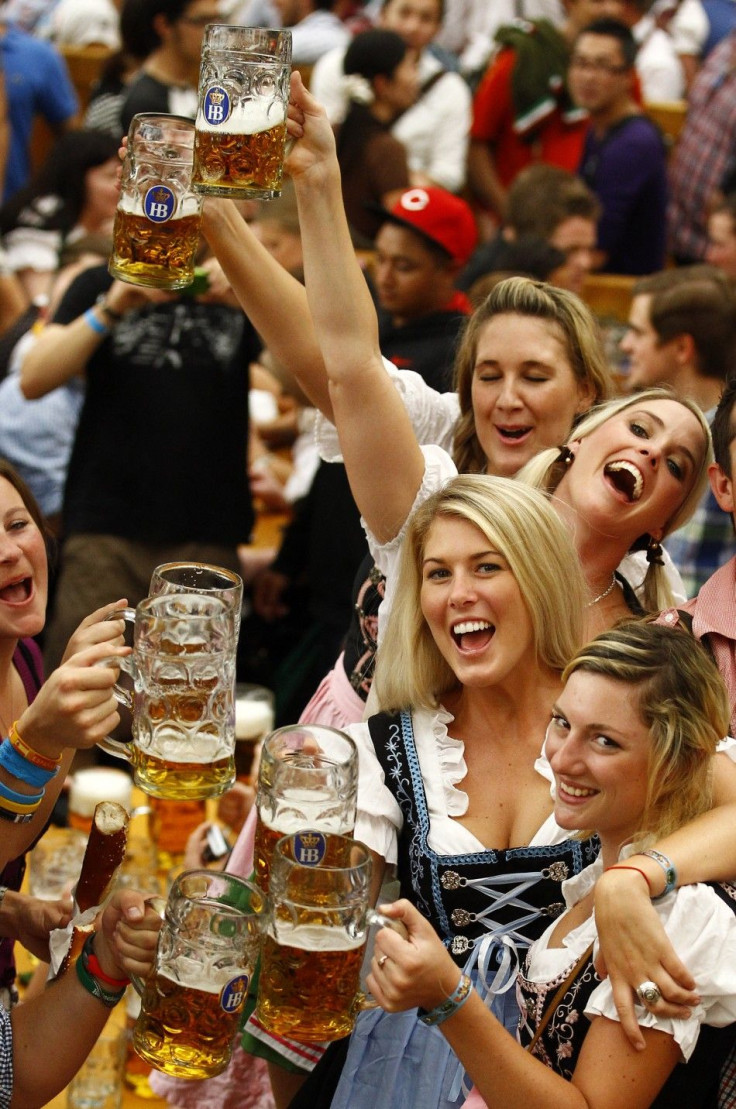Oktoberfest 2011: 5 Things to Know

Oktoberfest 2011 is currently underway in Munich, Germany. The festival from Sept. 17 to Oct. 3. Here are the five most important things to know about the festival.
5) Background
The first Oktoberfest was held in 1810, in honor of the Bavarian Crown Prince Ludwig's marriage to Princess Therese von Sachsen-Hildburghausen. In the 201 years since, Oktoberfest has grown into the largest carnival in the world, and an estimated seven million people will partake this year.
During the fest, revelers consume upwards of 7 million liters of beer, all of it made by Munich's famous local breweries, as well as more than 100,000 sausages, gingerbread cookies, roast chickens and all sorts of other delicious German cuisines.
Traditional costumes are no joke, and just about all of the locals will be in Bavarian dress. For men, that includes lederhosen -- German for leather pants -- knee-high socks, suspenders and a traditional shirt, often checkered blue and white, the colors of Bavaria. The female dress is called a dirndl, often with an apron and corseting front.
4) Best Weekend to Go
Oktoberfest spans three weekends, but most foreign visitors are unable to stay more than a couple days. So, when booking a trip, when is the best time to go?
Generally, the best weekends are the first and last. The first, because it's the first and people are excited for the festival to start. Also, one can watch Munich mayor Christian Ude tap the first keg dressed in his lederhosen in the Spaten tent. The last weekend is also great because it's the final hurrah, but be aware that the waitresses are rather exhausted after 16 days of carrying hundreds of liters of beer and dealing with drunk tourists.
The second two weeks of Oktoberfest also have a tendency to be rainy, so that's something to consider.
All of that being said, there's no such thing as a bad time to go, and every day of the festival will be memorable.
3) The Tents
Most of Oktoberfest takes place at the tents -- which are enormous wigwam like buildings all sitting next to one another on the huge fairgrounds. There are 14 tents in all, some of which hold up to 10,000 people.
Each of the Munich beer houses -- Pauliner, Hofbrau, Augustiner, Spatan and Hacker -- has it’s own. All of the tents are elaborately decorated and filled to the brim with locals and visitors, while German Um-pah bands play all day and night.
(An important note on the bands: once every three or four songs, the band will play Ein Prosit, a sing-along song during which everyone toasts and takes a drink together. By the third time you'll know the words, which are Ein Prosit, Ein Prosit, der Gemutlichkeit repeated twice.)
The Hacker tent is called Heaven for Bavarians because of its fluffy-cloud ceiling. The Hippodrom is one of the favorites for young people, and it is the first tent through the welcome gate. The Ochsenbraterei is famous for its oxen dishes, which is obvious thanks to the giant wooden ox rotating on a spit above the buildings.
Each tent exclusively serves just one brand of Bavarian beer. Although there is some variety in terms of styles and size, the best order is a mas, the one-liter large glass of traditional Oktoberfest style beer. If you order anything else, you are subject to ridicule. Trust me.
2) How to Get a Seat
Getting a seat among seven million people can be tricky. Large groups will do well to make table reservations in advance, which sometimes include a cover charge. If that fails, giving a waitress a generous tip is a good way to secure a seat.
Small groups have it easier, and the general rule of Oktoberfest is that if you can find a free place you can take it. Strangers squeeze into tables packed with happy Germans, and generally people will make room if you ask. Knowing from personal experience, the people at Oktoberfest are very friendly and happy to invite you to sit with them. Oktoberfest is a great place to make friends.
To ask for a seat in German, you say: Ist der Platz frei? (is this place free?)
There is no charge to get into the tents, but get there early, because once they're full it's very hard to get inside.
1) It's Not Just About Beer
First-timers will be taken aback by the number of children at Oktoberfest. But (most of) these kids will not be draining huge beers, but rather enjoying the rest of the festival. In fact, the 14 tents take up about one-third of the entire fair grounds, the rest of which is comprised of carnival rides, games, snack stands and attractions.
There is also a huge Ferris wheel, three or four roller coasters and about seven haunted house rides. Germans really love haunted houses.
The food is also as much part of the Oktoberfest experience as the beer. Sausage is, of course, an Oktoberfest staple and there are dozens of varieties of wurst to try. Roast chicken and fried fish are also traditional foods, which the gingerbread hearts are a famous dessert.
Proust!
© Copyright IBTimes 2024. All rights reserved.





















